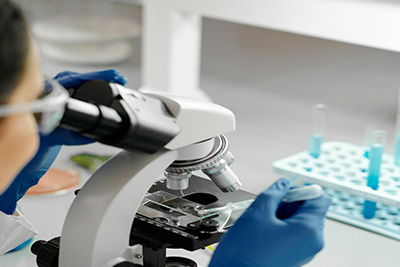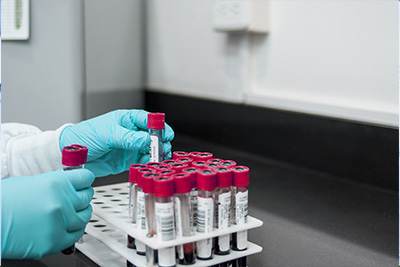-
![Mercaptide Tin’s I···]() 2024-11-24 Mercaptide Tin’s Influence on PVC He···
2024-11-24 Mercaptide Tin’s Influence on PVC He···The article explores the impact of mercaptide tin on the heat stability of polyvinyl chloride (PVC). It highlights recent advancements in the production and application of mercaptide tin, which significantly enhance PVC's thermal resistance. This development is crucial for improving the durability and longevity of PVC materials in various industries, including construction and automotive. The research underscores the potential of mercaptide tin as a superior stabilizer, offering enhanced performance compared to traditional alternatives.
read more > -
![Butyltin Compounds···]() 2024-11-24 Butyltin Compounds in Industrial PVC···
2024-11-24 Butyltin Compounds in Industrial PVC···Butyltin compounds, widely used as heat stabilizers in industrial polyvinyl chloride (PVC) production, have witnessed fluctuating market trends due to environmental concerns and regulatory pressures. These compounds, including tributyltin and dibutyltin, enhance PVC's thermal stability during processing. However, their potential toxicity has led to increased research into safer alternatives. Technological advancements and shifting industry standards are driving the development of less harmful stabilizers, while ongoing demand for PVC in construction, automotive, and packaging sectors sustains the market for butyltin compounds. Despite these challenges, innovations in formulation and application techniques continue to support the role of butyltin compounds in PVC manufacturing.
read more > -
![The Role of Octylt···]() 2024-11-24 The Role of Octyltin Compounds in Su···
2024-11-24 The Role of Octyltin Compounds in Su···Octyltin compounds play a significant role in sustainable polymer stabilization by providing effective protection against thermal degradation, UV radiation, and oxidative stress. These organotin compounds enhance the longevity and performance of polymers in various applications, including packaging, construction, and automotive industries. Their ability to form stable complexes with polymer molecules prevents degradation, reduces waste, and supports environmental sustainability. However, concerns over their toxicity necessitate further research into safer alternatives and application methods.
read more > -
![Enhancing Efficien···]() 2024-11-24 Enhancing Efficiency in Methyltin Pr···
2024-11-24 Enhancing Efficiency in Methyltin Pr···To enhance the efficiency of methyltin production, this study explores advanced technologies and best practices. It highlights innovations in synthesis methods, purification processes, and catalyst usage that significantly reduce production time and costs while improving product quality. Key recommendations include implementing continuous processing systems, optimizing reaction conditions, and adopting advanced analytical techniques for quality control. These strategies aim to streamline operations, minimize waste, and increase overall productivity in the methyltin manufacturing sector.
read more > -
![Dimethyltin in PVC···]() 2024-11-24 Dimethyltin in PVC Applications: Pro···
2024-11-24 Dimethyltin in PVC Applications: Pro···The article explores the use of dimethyltin in polyvinyl chloride (PVC) applications, detailing various production techniques employed in its manufacturing process. It highlights industry standards that govern the usage and safety protocols associated with dimethyltin, emphasizing its role in enhancing the properties of PVC materials. The discussion covers both the benefits and potential risks, underlining the importance of adhering to regulatory guidelines to ensure safe handling and application.
read more > -
![Mercaptide Tin Com···]() 2024-11-24 Mercaptide Tin Compounds: Industrial···
2024-11-24 Mercaptide Tin Compounds: Industrial···Mercaptide tin compounds are of significant interest in industrial production due to their unique properties and applications. These compounds are primarily produced through chemical synthesis involving mercaptans and tin salts. The industrial techniques focus on optimizing reaction conditions, such as temperature and catalysts, to enhance yield and purity. Current market opportunities for mercaptide tin compounds are expanding across various sectors including coatings, adhesives, and pharmaceuticals, driven by their superior performance characteristics. As environmental regulations become stricter, these compounds are gaining favor for their lower toxicity compared to traditional alternatives. This presents a promising outlook for both producers and consumers in the chemical industry.
read more > -
![Upstream Productio···]() 2024-11-24 Upstream Production Challenges in Bu···
2024-11-24 Upstream Production Challenges in Bu···The production of butyltins for the polymer industry faces significant upstream challenges, including the high cost and limited availability of raw materials such as dibutyltin and tributyltin. Additionally, the manufacturing process is energy-intensive and requires stringent safety measures due to the toxicity of butyltin compounds. These factors contribute to higher production costs and environmental concerns, posing hurdles for widespread adoption in polymer applications.
read more > -
![The Process Flow o···]() 2024-11-24 The Process Flow of Octyltin Compoun···
2024-11-24 The Process Flow of Octyltin Compoun···The manufacturing process of octyltin compounds involves several critical steps focused on ensuring quality and environmental control. Initially, raw materials are carefully selected and purified to meet stringent standards. The synthesis reaction is conducted under controlled conditions to produce the desired octyltin intermediates. Throughout the process, rigorous quality checks are implemented to maintain product consistency and efficacy. Additionally, advanced waste treatment technologies are employed to minimize environmental impact, adhering to regulatory guidelines. Overall, this comprehensive approach ensures both the effectiveness of the final product and the protection of the environment.
read more > -
![Environmental Regu···]() 2024-11-24 Environmental Regulations and Compli···
2024-11-24 Environmental Regulations and Compli···This study examines the environmental regulations and compliance measures in the production of methyltin and dimethyltin. It highlights the importance of adhering to these regulations to minimize ecological impact and ensure sustainable manufacturing processes. The research underscores key regulatory standards, such as emission limits and waste management protocols, which are crucial for reducing hazardous by-products. Additionally, it discusses the challenges faced by industries in meeting these stringent requirements and explores potential technological solutions and best practices for compliance. Overall, the paper emphasizes the need for continuous improvement in regulatory adherence to protect the environment and promote industry sustainability.
read more >









